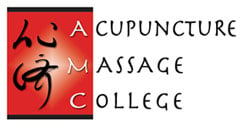Osteoarthritis (OA) is caused by a progressive degeneration of bone cartilage and is the most common type of arthritis in the United States. Associated with aging, the chronic condition affects 21 million Americans and causes more physical limitation than lung disease, heart disease and diabetes mellitus, according to the Centers for Disease Control and Prevention.
For individuals experiencing OA, Swedish massage can relax muscles, joints and tendons, reduce pain in the tissues and eliminate painful muscle spasms.
Knee OA is a chronic condition in which the utilization of the knee muscle is compromised. Osteoarthritis usually leads to the atrophy of muscle fibers due to disuse, muscle inhibition and instability of the joint.
Swedish massage, when combined with muscle strength training, can improve the stability of the knee joint. Massage therapy can aid in reducing dependence on medications such as nonsteroidal anti-inflammatory drugs (NSAIDs), which can cause adverse gastrointestinal side effects. Massage therapy can also delay any functional decline.
Massage can enhance blood circulation to the region affected by osteoarthritis. Increased blood flow brings an influx of cells which cleans out debris and aids in cartilage and bone remodeling.
A recent 16-week study from researchers at the Yale Prevention Research Center identifies the potential benefits of Swedish massage on osteoarthritis patients with pain, stiffness and limited range of motion.
The 68 study participants were randomly assigned to either a group that received massage therapy immediately or to a wait-list control group that received massage after an initial eight-week delay. Both groups continued previously prescribed treatments and medications.
In the massage group, participants received a one-hour Swedish massage twice a week for four weeks, followed by Swedish massage once a week for the next four weeks. After the first eight weeks of massage therapy, participants had less pain and improved flexibility and range of motion. Pain, stiffness and functional ability were all significantly improved when compared to the control group.
Participants who initially received no massage during the first eight weeks showed no changes in symptoms. During weeks nine through 16, after receiving massage therapy, they experienced benefits similar to those receiving the initial massage therapy. When reassessed eight weeks after completion of the massage intervention, the benefits of massage remained significant.
Study findings indicate that Swedish massage has therapeutic benefits, can be used in conjunction with conventional treatment for osteoarthritis and has virtually no adverse side effects.
For information about Acupuncture & Massage College’s Oriental Medicine and Massage Therapy programs call Joe Calareso, Admissions Director, at (305) 595-9500.

 (305) 595-9500
(305) 595-9500






